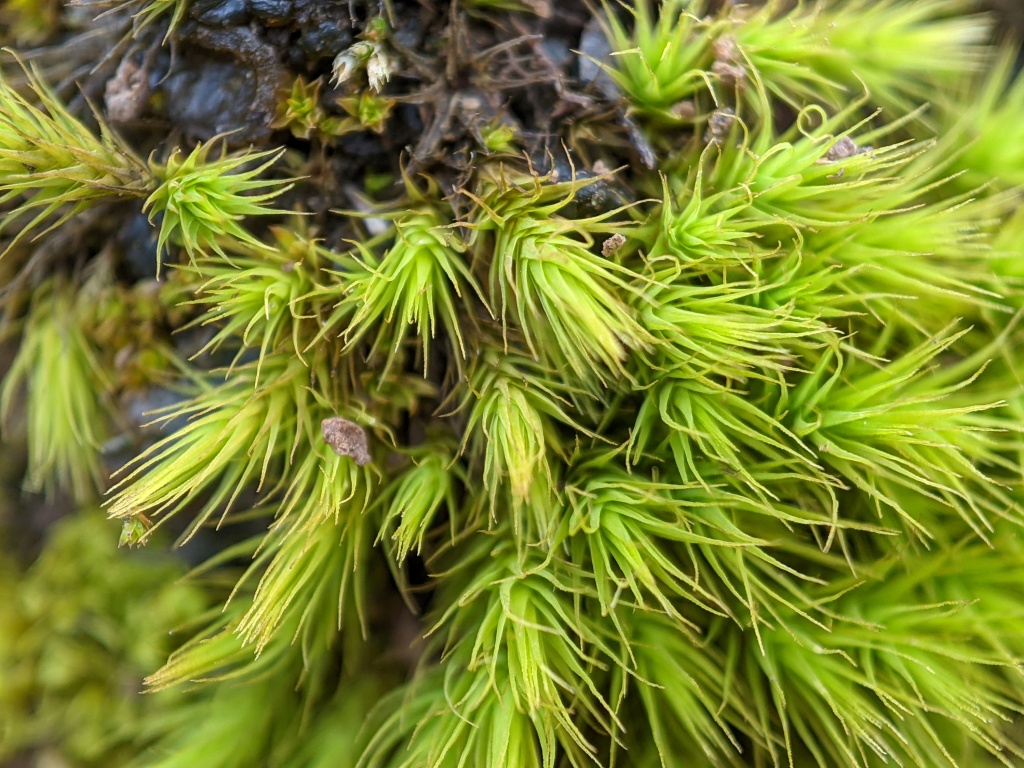Bartramia breutelii
Müll.Hal.Dioicous. Loose tufts on soil or rocks, yellow-green. Stems erect, 1–2.5 (–4) cm long, sparsely branched, with sparse dark reddish brown rhizoids at base. Leaves erect when moist, usually closely appressed when dry, occasionally squarrose-recurved when dry (not in Victoria), linear-lanceolate, 3–4.5 mm long, 0.6–0.9 mm wide; apices subulate; costae short-excurrent as denticlate awn; margins denticulate, with single or double teeth, revolute toward base, with 10–12 rows of shorter quadrate cells at base; laminal cells in apical half rectangular, 17.5–37.5 μm long, 7.5–10 μm wide, bistratose, prorate; laminal cells in basal half long-rectangular, to c. 50 μm long, 15 μm wide, patchily bistratose, prorate. Sporophytes rare (not found in Victoria). Setae c. 7 mm long, yellowish. Capsules inclined, subglobose, straight, 2 mm long. Peristome double; exostome of 16 teeth; endostome rudimentary. Operculum conic.
VVP, CVU. Recorded from dry sclerophyll forest near Seymour but likely to be more widespread. Also WA, SA and NSW. South Africa.
 Spinning
SpinningBell, G.H. (2006). Bartramia. Flora of Australia 51: 249–256.
Magill, R.E. (1987). Bartramiaceae. *Flora of Southern Africa: Bryophyta * 1(2): 407–438.


